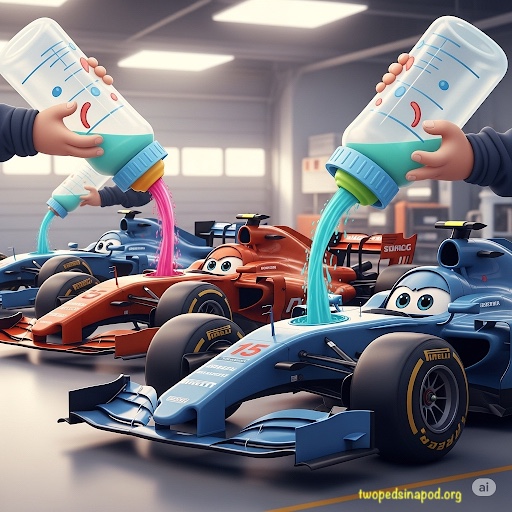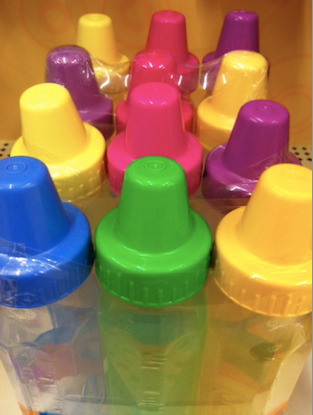Bottle Feeding Your Baby: from birth and beyond

There are many reasons that your baby may need formula or breast milk fed through a bottle. Some parents initially feel guilty using a bottle. If this is the case with you, know that babies bond with their parents and other caregivers with every bottle they take. One benefit of bottle feeding is that moms can get more sleep. After all, they are recovering from the herculean feat of giving birth and others can share in nourishing the baby. Below are tips for bottle feeding your baby:
Different babies are different
Some newborns will want the equivalent of Thanksgiving dinner. That is, they may take 2-3 ounces at one feeding. Others have had enough to eat after a small snack of half an ounce. Your baby will tell you they’ve had enough by pushing the bottle out of their mouth or using the bottle as a pacifier (non nutritive suck) rather than sucking hard enough to draw out the liquid (nutritive suck). Do not panic if your baby is a little gaggy when they first learn to drink. Remember, they spend 9 months getting nutrition through an umbilical cord and are inexperienced with sucking and swallowing.
By two months of age, some babies take 4 ounces at every meal, others guzzle 8 ounces and are content with longer intervals between feedings. Your pediatrician will weigh your baby and measure your baby’s length and head size to be sure that they are getting enough to eat. If your baby is peeing and pooping several times daily, they are likely drinking enough to gain weight.
Put more formula or breast milk in the bottle than you expect your baby to take. Allow them to stop when they are no longer hungry. Cajoling your baby to finish up the last drop takes away their ability to follow their own hunger drive. It also can lead to more spit up. Be okay with “wasting” some formula or breast milk. Likewise, if your baby starts to fall asleep while feeding, it is time to end the feeding. Put them into their crib or bassinet. Teach them that “Cribs are for sleeping” and “Bottles are for feeding.” Think of this action as the gentlest form of sleep training. Babies who are not hungry but continue to “dream” feed may face cavities when their teeth come in. This is because of having formula or breast milk (both are sweet) constantly bathing their gums.
How often should your baby eat?
Some bottle fed babies start out eating every two hours, others feed every 3-4 hours. By two months, some babies sleep between 8-10 hours overnight and make up for the “missed feedings” by eating more frequently during the day. Offer a bottle when they act hungry.
Should bottles be sterilized?
According to the Centers for Disease Control, baby bottles should be sterilized for infants under two months of age. After that, wash bottles well with warm soapy water or in the dishwasher.
If using powder formula, you may mix it with tap water. If you drink your own tap water, your baby can too. But if you routinely boil or filter your own drinking water, do the same for your baby. You don’t need to buy bottled water, “nursery water,” or any other gimmicky water. If you drink well-water, have it tested for contaminants before you use it to mix formula powder, or buy read-to-feed formula.
If you have old lead pipes, test your water for lead. Additionally, use cold water for preparing baby formula, as hot water leaches the lead more easily into the water from the pipes.
If your baby is under 2 months of age, was born prematurely, or has an immune deficiency, talk to your pediatrician about how to prepare powder formula or if you should give liquid formula instead.
Avoid the microwave
Microwaves produce hot-spots that can burn a baby. The American Academy of Pediatrics advises warming a bottle in a bowl of warm water. This is all moot if your baby takes formula at room temperature. Try room temperature… you never know!
Best formula choice
Standard FDA-approved cow-milk based formulas with iron meet most babies’ needs. Some parents have coupons for one brand over another. It is perfectly okay to save money and buy the store brands. It is safe to toggle between brands, breast milk or types of formulations (eg ready-to-feed vs. powder). Some formulas are made from goat’s milk and some are organic. As long as you buy an FDA regulated formula, all of these are safe and nutritious for your baby. The ingredient list does not differ much among formulas that promote “for fussy babies, for gassy babies, for colic babies, etc.”
There are several concerns over formulas obtained from other countries. They are not regulated by the FDA. Also, formulas may not be shipped or stored correctly, potentially leading to temperature fluctuations that can affect nutrients. Of further concern, if there is a formula recall, you might not hear about it until much later. Other concerns about formulas produced outside of the United States are delineated in this post by the American Academy of Pediatrics.
You may have read in the news recently that formula contains lead and other heavy metals- is this a real concern?
This consumer report, released in March 2025, analyzed infant formulas sold in the United States. The bottom line is that most formulas are safe and the FDA needs to continue their active involvement in infant formula regulation.
Transitioning to a “big kid” milk
For health reasons, do not give your baby any cow’s milk, goat’s milk, or nut/oat/soy milk before their first birthday. Before a year, anything besides formula or breast milk may not provide enough nutrition for growth and may irritate the gut enough to cause microscopic bleeding. Bleeding can lead to severe iron deficiency which can affect brain growth and hinder normal development.
Infant formula has the same calorie count and similar nutritional content as breast milk. Love and food can come through a bottle. Ultimately, what works within your family is what is right for your baby.
Julie Kardos, MD and Naline Lai, MD
©2025 Two Peds in a Pod®
 Many families know from the start they plan to formula feed their babies. For some, this decision is based on the mom’s medical condition which precludes breastfeeding. Some base the decision on cultural beliefs, some on personal preference. Still others have tried to breast feed but nursing does not work out.
Many families know from the start they plan to formula feed their babies. For some, this decision is based on the mom’s medical condition which precludes breastfeeding. Some base the decision on cultural beliefs, some on personal preference. Still others have tried to breast feed but nursing does not work out.